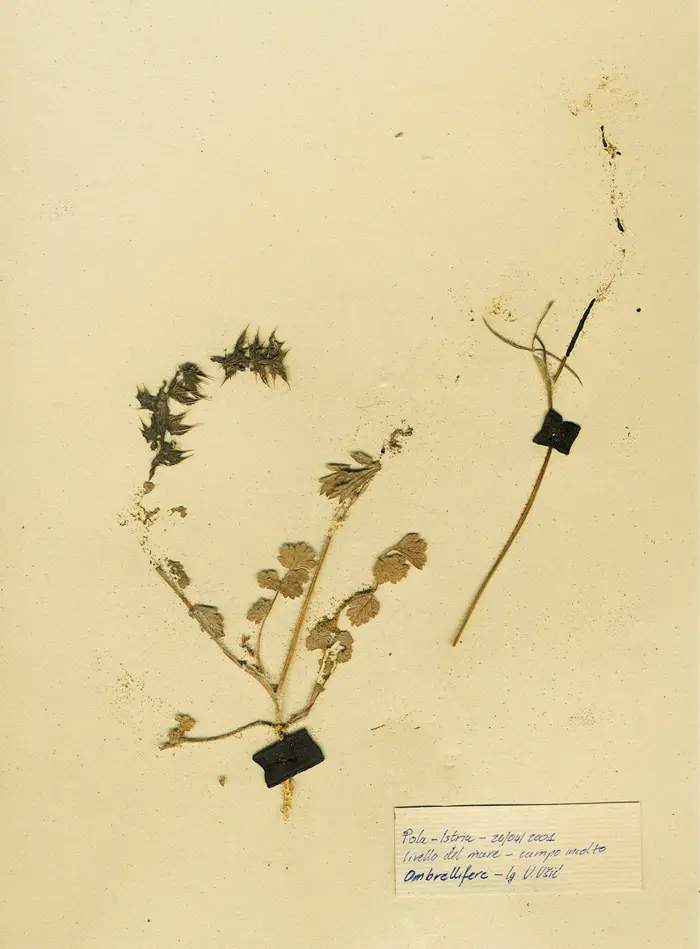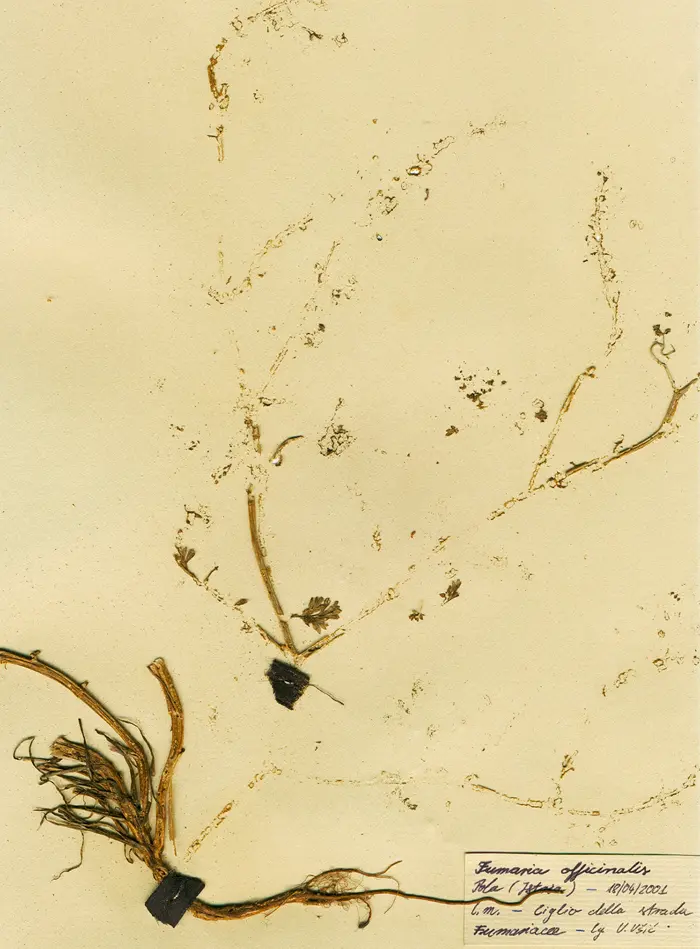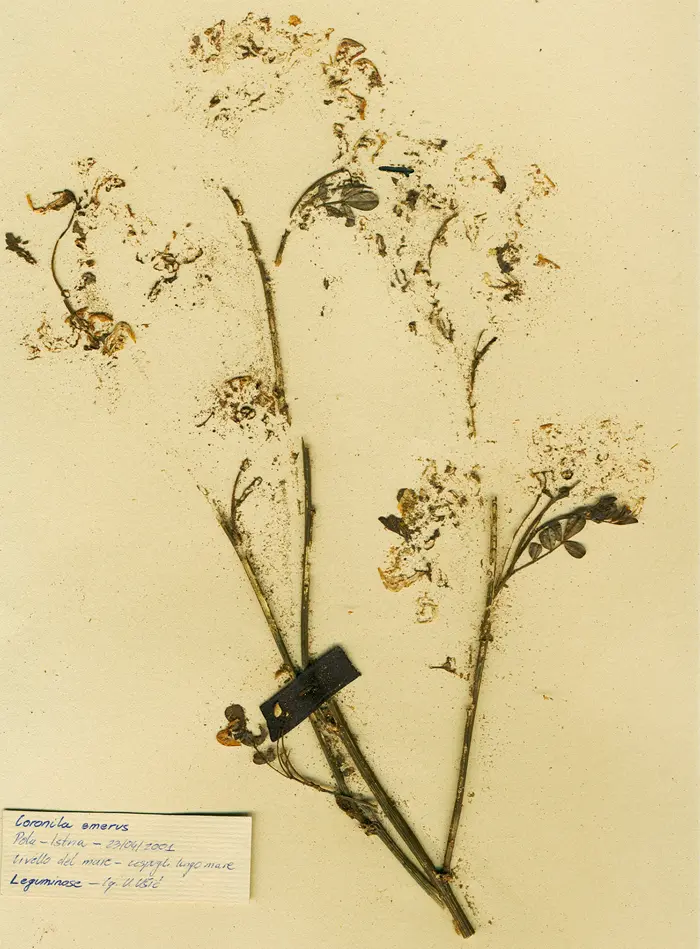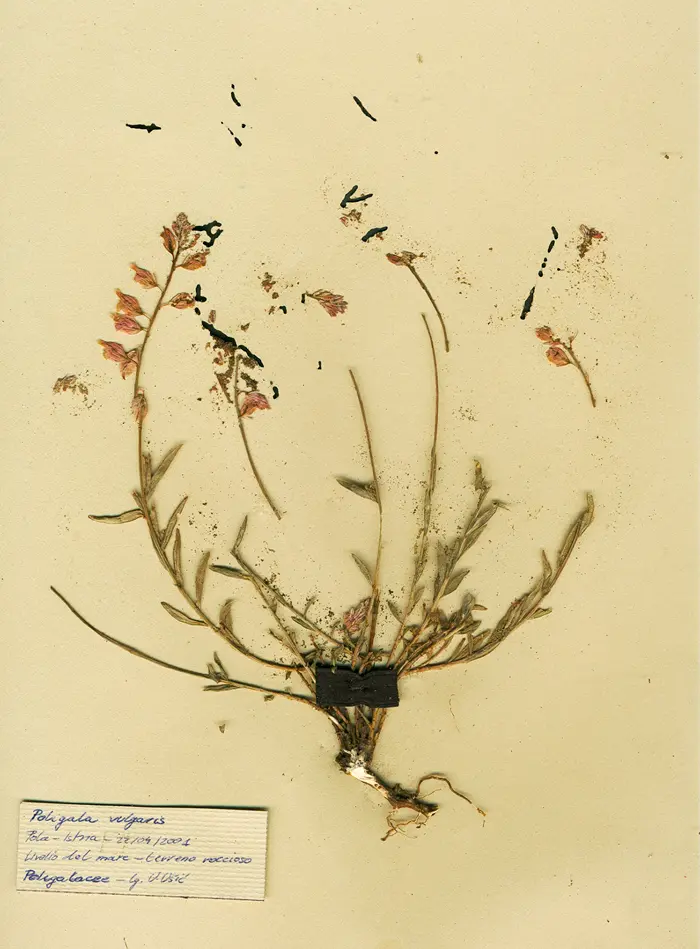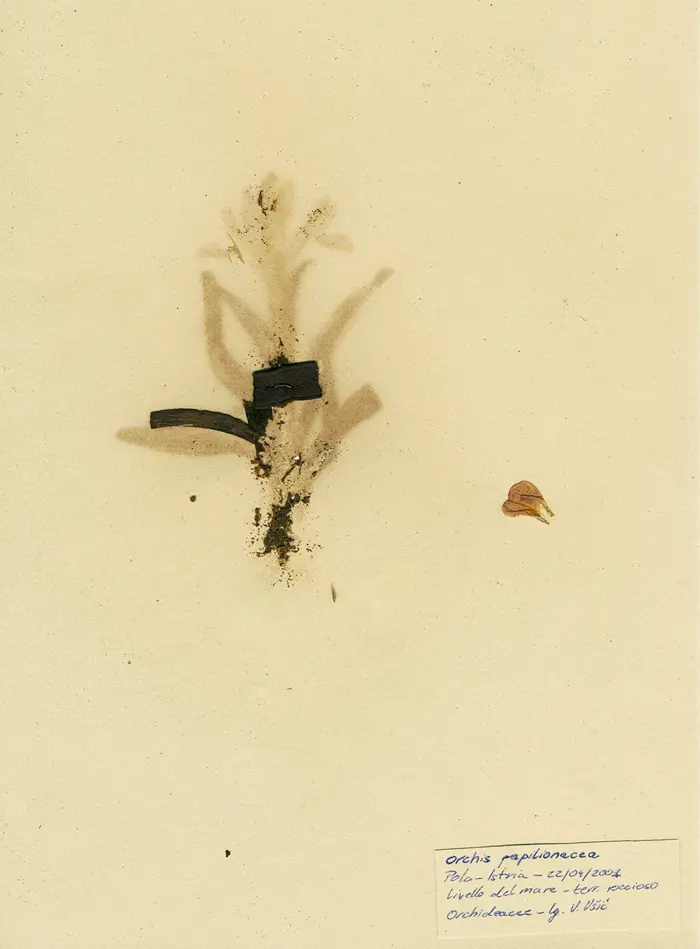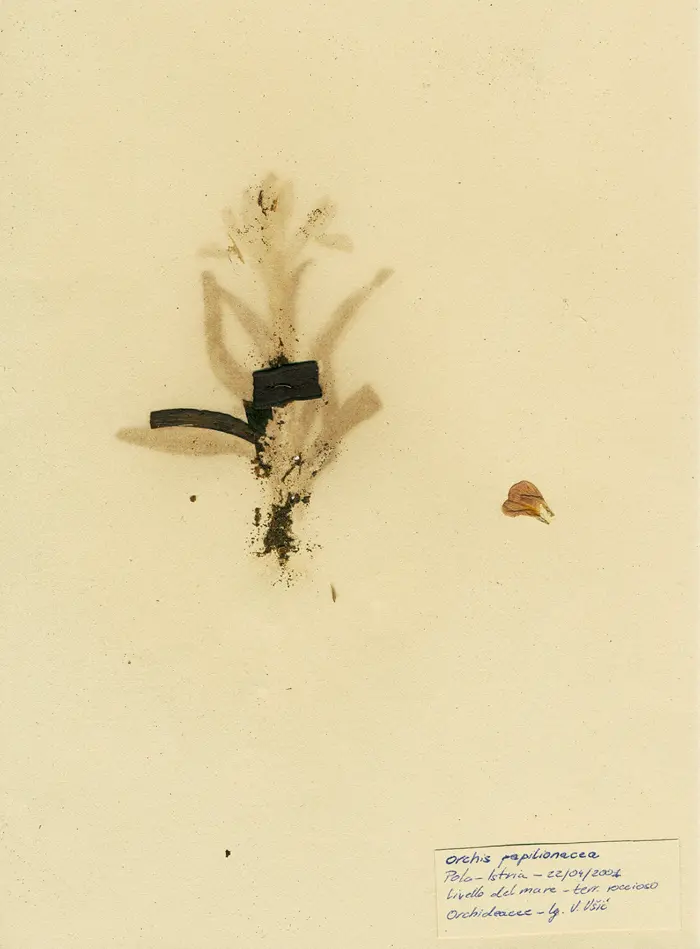objects
Herbarium
Herbarium is a series of 7 botanical tables eroded by insects and microorganisms. Herbaria are collections where plant specimens are classified according to families and genera.
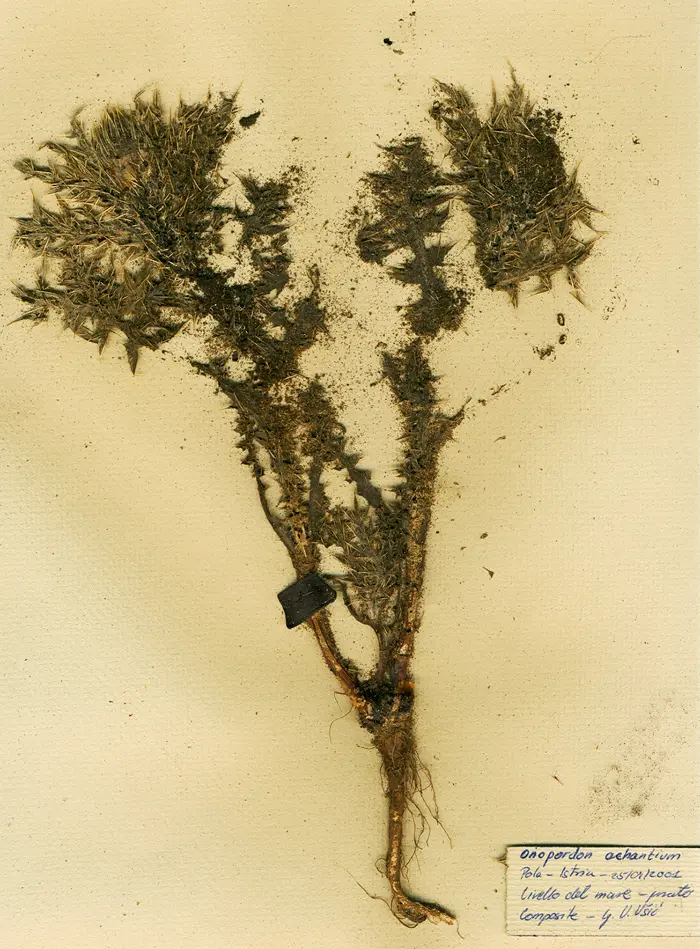
Like botanical gardens and arboretums, herbaria are the “dictionaries” of the plant kingdom, the reference specimens essential to the proper naming of unknown plants. The tables of this particular Herbarium (2012) once belonged to the collection of a sea biologist who collected the wild plant specimen on the Croatian Adriatic coast, identified them, mounted them on cardboard and labelled them by their proper scientific names and collection spot. These botanical tables were stored for many years as unmounted sheets in a closed folder. During this time, insects and microorganisms ate parts of the specimen and the paper sheets. When I opened the folder containing this Herbarium, the result of the action of insects microorganisms struck me. Filigrees, silhouettes and small holes had replaced the original specimens, though the plants were still recognizable. For instance, the specimen of Orchis papillonacea, a wild species of orchid, had left only a vague, sensual shadow on the cardboard. Of the specimen of Fumaria officinalis, the roots are intact, while the rest of the plant is deducible from a delicate outline on the cardboard. I cleaned the dust, fixed the remaining fragments with a fixative and eventually framed the botanical tables.
Defining who owns the authorship of Herbarium is a challenging task. Did nature and its wild plants create it? Did the marine biologist create it by classifying wild plants? Did microorganism and insects create it by eating leaves and cardboard sheets? Did the artist create it by retrieving the corroded tables from trash, fixing plant fragments and framing the tables? Each one of these subjects contributed to the creation of this work. However, there is main author: time, that secretly acted inside the closed folder. On an aesthetic level, the erosive process of time created a sophisticated visual embroidery on each table. On a philosophical level, it intertwined two apparently opposite processes: the classifying action of the scientist and the transformative process of nature. Each table represents, at the same time, classification effort and entropia, identification and transformation. The eroded botanical tables of Herbarium are similar to a memento mori, the medieval objects created for the reflection on mortality and the transient nature of life. They are a reminder of how natural processes disregard human attempt to give an order, classify, encode the natural world through knowledge.
Morphology
Series of 7 botanical tables.
Dried wild plant specimens mounted on cardboard and labelled, glass frames
22 x 29 cm
Credits
Margherita Pevere: Concept and realisation
From U. U.’s collection
